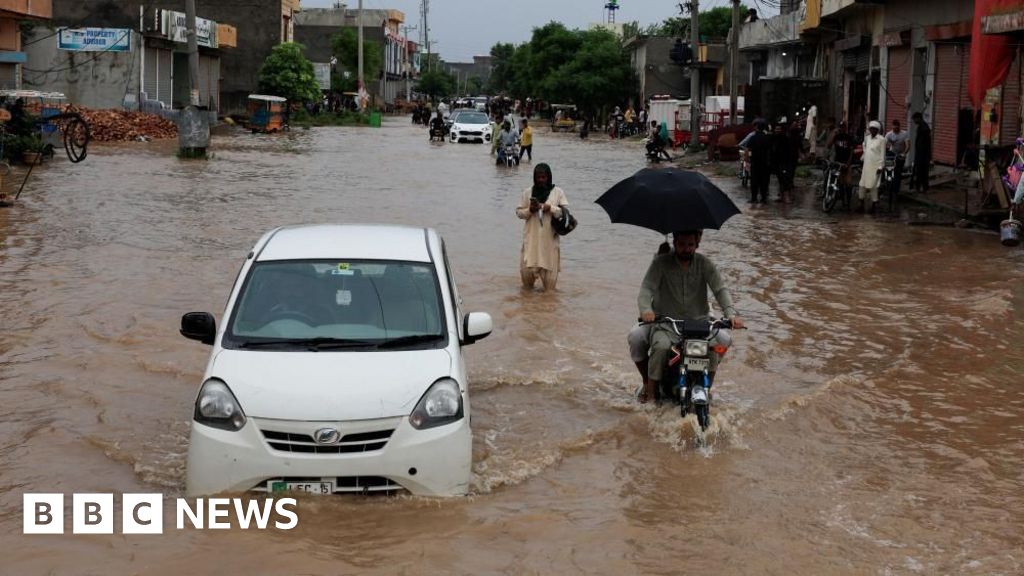Some 200,000 people have been evacuated as floods devastate parts of Pakistan's Punjab province. Rescuers carried residents to safety in boats after disaster authorities warned of exceptionally high floods along the Ravi, Sutlej, and Chenab rivers. Several districts have called in the army to assist in the evacuation efforts.
This situation arises after Pakistani officials reported that India would release water from major dams upstream, contributing to heavy flooding in one of Pakistan's most populous regions. Both countries have experienced intense rainfall recently, with the monsoon rains in Pakistan causing over 800 fatalities since June.
The National Disaster Management Authority (NDMA) has issued warnings for residents in affected areas to avoid rivers, drains, and low-lying regions. Prime Minister Shehbaz Sharif assured that the federal government will aid regional authorities in managing risks, especially in urban areas like Gujarat, Sialkot, and Lahore.
Sialkot has recorded the highest rainfall in 24 hours over the past 49 years, leading to submerged cars, homes, and buildings. Many residents remain stranded, and reports indicate that evacuations are ongoing in the Kasur district near the Indian border.
Local men, women, and children are being relocated by boat; significant numbers have been rescued, yet many refuse to leave due to financial constraints, as recounts from families suggest a preference to protect property over evacuation.
India's warning of increased water release was an unusual instance of communication between the two countries, which have experienced heightened military tensions recently. Both nations have been grappling with the challenges posed by excessive monsoon rains. Recent landslides in Indian-administered Kashmir have claimed at least 30 lives, underscoring the severity of the current weather-related crises in the region.
This situation arises after Pakistani officials reported that India would release water from major dams upstream, contributing to heavy flooding in one of Pakistan's most populous regions. Both countries have experienced intense rainfall recently, with the monsoon rains in Pakistan causing over 800 fatalities since June.
The National Disaster Management Authority (NDMA) has issued warnings for residents in affected areas to avoid rivers, drains, and low-lying regions. Prime Minister Shehbaz Sharif assured that the federal government will aid regional authorities in managing risks, especially in urban areas like Gujarat, Sialkot, and Lahore.
Sialkot has recorded the highest rainfall in 24 hours over the past 49 years, leading to submerged cars, homes, and buildings. Many residents remain stranded, and reports indicate that evacuations are ongoing in the Kasur district near the Indian border.
Local men, women, and children are being relocated by boat; significant numbers have been rescued, yet many refuse to leave due to financial constraints, as recounts from families suggest a preference to protect property over evacuation.
India's warning of increased water release was an unusual instance of communication between the two countries, which have experienced heightened military tensions recently. Both nations have been grappling with the challenges posed by excessive monsoon rains. Recent landslides in Indian-administered Kashmir have claimed at least 30 lives, underscoring the severity of the current weather-related crises in the region.



















